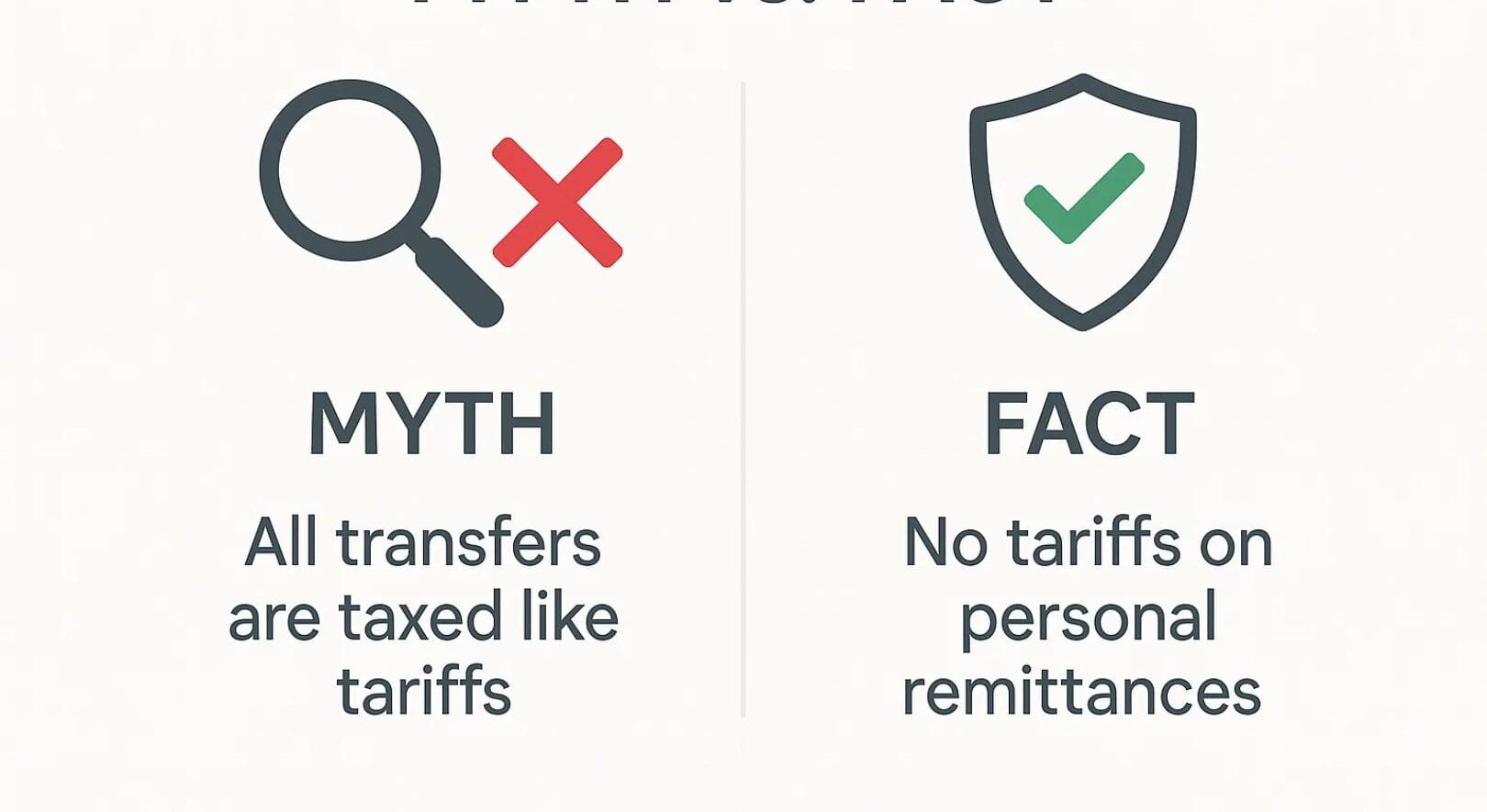The Tariff Myth in Money Transfers
For many NRIs, the question often arises: “Are there tariffs on sending money from the USA to India?”
The answer is simple: No, personal remittances are not taxed like goods imports. Tariffs apply to products crossing borders, not funds.
But here’s the catch, hidden costs such as provider fees, exchange rate margins, and receiving bank charges often feel like tariffs. And starting 2026, a 1% remittance tax on certain cash-based transfers will further change the landscape.
What Are Tariffs and Why Don’t They Apply to Personal Money Transfers?
Tariffs Defined:
- A tariff is a government-imposed tax on imported or exported goods.
- Example: A 10% tariff on electronics increases the cost of imported phones.
Why Tariffs Don’t Apply to Transfers:
- Sending money from the USA to India is considered a financial service, not a goods transaction.
- Therefore, no customs tariff applies.
👉 What you really face are service costs disguised as “tariff-like” charges.
The Real Costs That Feel Like Tariffs on Money Transfers
Even without tariffs, NRIs often lose money through:
1. Transfer Fees
- Wise: Transparent fees + mid-market rate.
- Remitly: $3.99 for express transfers, free for economy transfers.
- Banks: $20–$45 for international wire transfers (least efficient).
2. Exchange Rate Margins
Providers typically reduce the conversion rate compared to the Google rate.
- Example: Mid-market rate = ₹83.10/USD.
- Provider rate = ₹81.30/USD.
- Loss: ₹1.80 per USD → on $5,000, that’s ₹9,000 (~$108) lost.
3. Receiving Bank Charges in India
- Many Indian banks deduct ₹200–₹500 per transaction for handling SWIFT transfers.
- These charges are often hidden until funds arrive.
What Is the 1% Remittance Tax Coming in 2026?
In January 2026, the U.S. federal government will introduce a 1% remittance tax on money transfers under the One Big Beautiful Bill Act.
Key Details:
- Applies to: Cash, money orders, cashier’s checks.
- Does NOT apply to: Transfers funded by U.S. bank accounts, debit cards, or credit cards.
- Impact: Cash-based remittances will become more expensive.
Example: Sending $2,000 in cash = $20 tax in addition to provider fees.
This move is expected to push more NRIs toward digital transfers.
Strategies to Avoid the 1% Remittance Tax in 2026
Here’s how NRIs can protect their hard-earned money:
- Use Digital Platforms
- Apps like Abound, Wise, Remitly are exempt if funded through U.S. bank accounts or cards.
- Avoid Cash or Money Orders
- Cash-based transfers will be taxed – switch to digital-first methods.
- Use NRE Accounts in India
- NRE (Non-Resident External) accounts allow tax-free deposits in India.
- Funds are fully repatriable and not subject to TDS.
Common Misconceptions About Tariffs and Taxes on Money Transfers
❌ Misconception 1: “All transfers are taxed like tariffs.”
✔ Reality: Tariffs only apply to goods, not financial transfers.
❌ Misconception 2: “My app always gives the best rate.”
✔ Reality: Providers may advertise low fees but hide margins in exchange rates.
❌ Misconception 3: “The 1% tax only applies to NRIs.”
✔ Reality: It applies to all U.S. residents using cash-based remittances.
Best Practices for NRI Money Transfers
✅ Tip 1: Choose a Reliable Platform with Transparent Pricing
Platforms like Abound provide real-time tracking, best-in-class rates, and no hidden fees.
✅ Tip 2: Avoid Banks for Remittances
Banks charge higher fees + worse rates compared to fintech platforms.
✅ Tip 3: Use Referral Programs
Abound offers referral bonuses, helping you save on future transfers.
Conclusion
There are no tariffs on sending money from the USA to India. But NRIs should watch for hidden provider fees, exchange rate losses, and receiving bank charges.
From 2026, the 1% remittance tax will apply to cash-based transfers but digital platforms like Abound remain exempt.
👉 CTA: Start your transfer with Abound today. Get transparent pricing, the best USD to INR rates, and fast, secure transfers to India.
FAQs
Q1: Is there a tariff on sending money from USA to India?
No. Personal remittances are not subject to tariffs, but you may pay fees, exchange rate margins, and from 2026, a 1% tax on cash-based transfers.
Q2: How does the 1% remittance tax affect NRIs?
It applies only to cash-based transfers via money orders or checks. Digital transfers funded through bank accounts or cards remain exempt.
Q3: How can I avoid the 1% remittance tax?
Always use digital platforms like Abound, Wise, or Remitly with bank account funding.
Q4: What are the hidden costs when transferring money to India?
Exchange rate losses, provider fees, and receiving bank charges (₹200–₹500) are common.
Q5: What’s the best way to send money to India in 2025?
Use Abound, it offers competitive rates, secure transfers, and transparent pricing without hidden charges.


